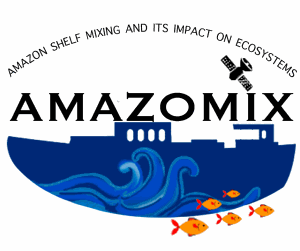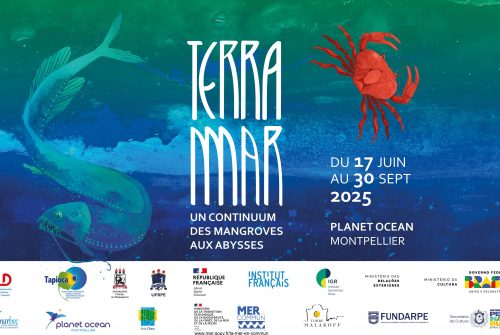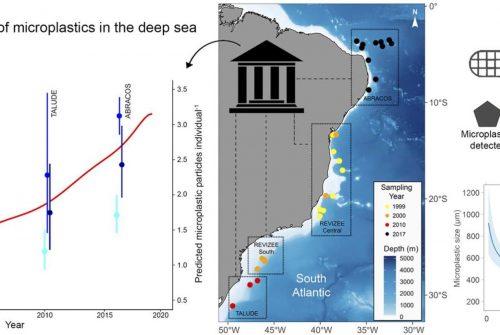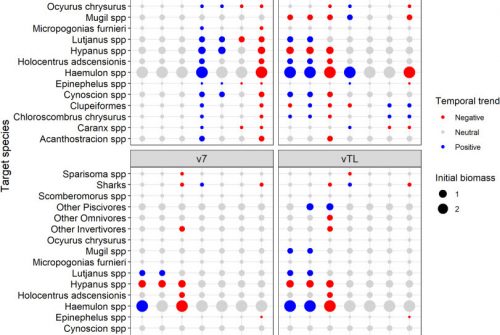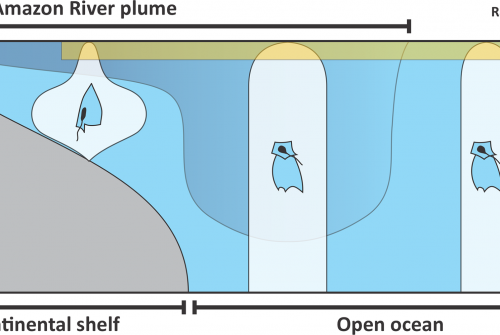Date: 2021
Temporal Extent: 2021-08-28 - 2021-10-08
Authors: Rousselot Pierre, Cervelli Evan, Fouilland Eric, Koch-Larrouy Ariane, Lebourges-Dhaussy Anne, Meriaux Xavier, Le Ridant Arnaud, Roubaud Fabrice, Roudaut Gildas, Ternon Jean-Francois, Vantrepotte Vincent, Bertrand Arnaud
DOI: 10.17882/97235
Description: Physical data associated with the AMAZOMIX cruise. The Amazon shelf encompasses a variety of physical processes, such as fluvial inputs, coastal currents, mesoscale, filaments, tides, internal waves and upwelling, influencing nutrient concentrations, chlorophyll and suspended matter. They also affect energy, salt and heat balances; parameters that condition physical/biogeochemical interactions and ecosystem functioning, from bacteria to plankton to fish resources. In particular, internal tidal waves are very energetic in this region. They impact biogeochemical cycles via the vertical mixture induced by their dissipation or vertical movements induced by their propagation. They thus allow a significant input of nutriments into the euphotic layer enhancing primary production, as observed on the surface from watercolour data. Internal tidal waves could thus influence the biological pump and the carbon cycle. In addition, overall marine biodiversity of the region, from bacteria to fish is not well described. The connectivity of species in the tropical Atlantic is also still an open question. The Caribbean region is by far more bio-diverse than the Brazilian one. One of the hypotheses is that the Amazon plume, which can extend up to 3,000 km off the mouth, would constitute a barrier for some organisms. The Amazon Shelf is thus an ideal experimental laboratory to study the impact of physical processes on the structure and function of neritic and oceanic marine ecosystems.
In this context, the objective of the multidisciplinary AMAZOMIX survey was to study the impact of the Amazon River plume, internal tides and associated turbulent mixing, on marine ecosystem in contrasting regions off the Amazon shelf. For that purpose, the multidisciplinary AMAZOMIX project brings together physicists, biogeochemists, bioopticians and biologists. The sampling strategy consists in the simultaneous acquisition of a comprehensive set of environmental and biological compartments, including micro-organisms (bacteria, phyto and zooplankton) and higher trophic levels (micronekton, demersal and pelagic fish). AMAZOMIX is the first campaign to develop this multi-disciplinary approach off the Amazon shelf. In situ results will be analysed in interaction with digital tools and data, modelling (1/36°, with and without tides, 1/12° coupled) and satellite data analyses.
This dataset contains the AMAZOMIX 2021 qualified measurements of
- The hydrographic CTD-02 (netCDF and csv text files)
- Ship Acoustic Doppler Current Profilers (OS 75 kHz, netCDF and csv text files)
- Lowered Acoustic Doppler Current Profilers (WH300 downlooking and WH300 uplooking, netCDF and csv text files)
- Thermosalinometer (netCDF and csv text files)
- Vertical microstructure profile (VMP-250, binary file)
